Abstract
ABSTRACT Total dust samples produced by machining three commercial asbestos-cement products (autoclaved sheet, non-autoclaved sheet, pipe) were examined for their dimensional, surface, and physicochemical characteristics. Microscopic inspection of dust fractions with different settling characteristics in air allowed determination of the simple dimensional features that apply to respirable fibres—that is, the true diameter, length, and aspect ratio and the coil diameter, coil length, and coil aspect ratio. The respirable fraction as a percentage of the total dust varied with the type of machined product: 8·5% for non-autoclaved sheet, 10·5% for autoclaved sheet, and 35% for pipe.
Quantitative x-ray diffraction of different granulometric fractions showed that the asbestos content decreases with fraction size (thus the asbestos content will change with distance from the dust source). Electron microscopic examination of fine dust (aerodynamic diameter < 7 μm) showed that only about 10% of the inspected particles were optically virgin. From these observations it has been calculated that the threshold limit value of 2 fibres per cm3 of air corresponds to a total dust concentration of 1·2, 0·6, and 0·1 mg/m3 and to a maximum admissible respirable dust content of 0·1, 0·06, and 0·04 mg/m3 for non-autoclaved sheet, autoclaved sheet, and pipe respectively. The surface of optically virgin fibres may still be contaminated by calcium containing particles, as shown by analytical transmission and scanning electron microscope. Dust from the autoclaved product contains fewer calcium coated fibres. The physicochemical behaviour of dust, as shown by dissolution kinetics and absorption of carcinogens from tobacco smoke, is comparable to the behaviour of cement rather than of pure asbestos. In general, asbestos cement dust differs consistently from pure asbestos. Conclusions, drawn from studies on pure asbestos, cannot be applied as such to asbestos cement dust.
Full text
PDF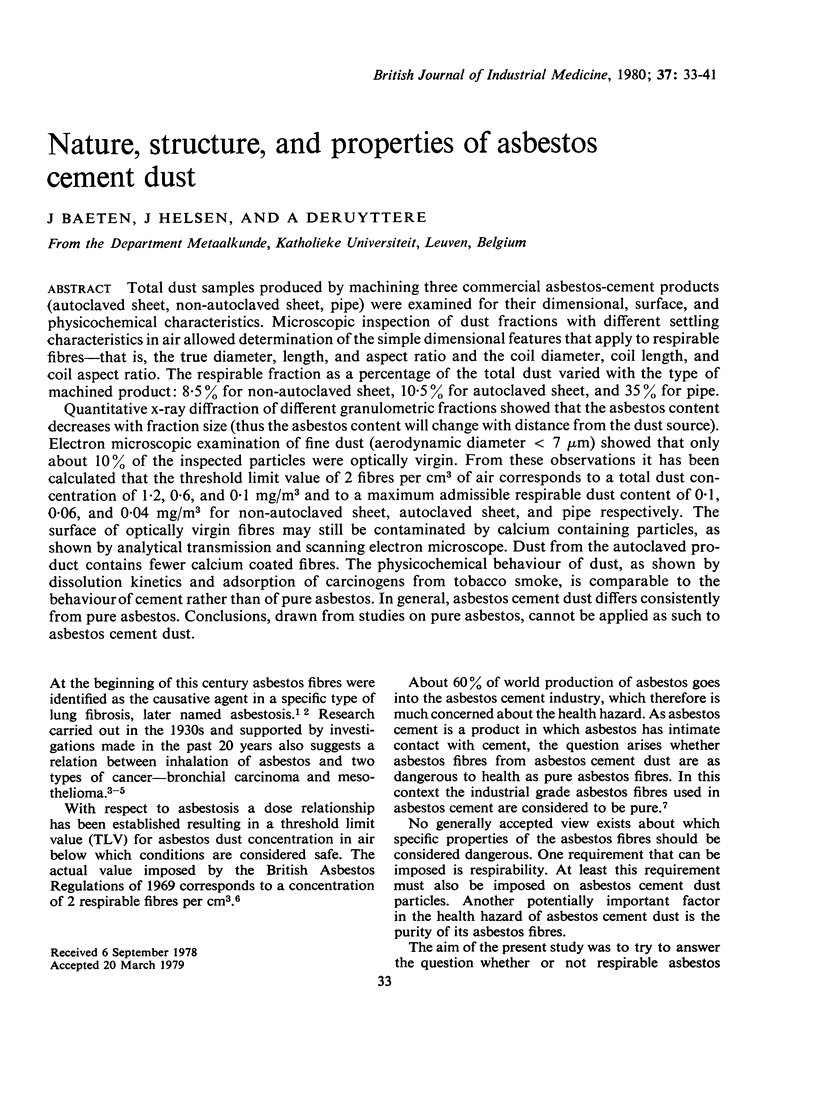

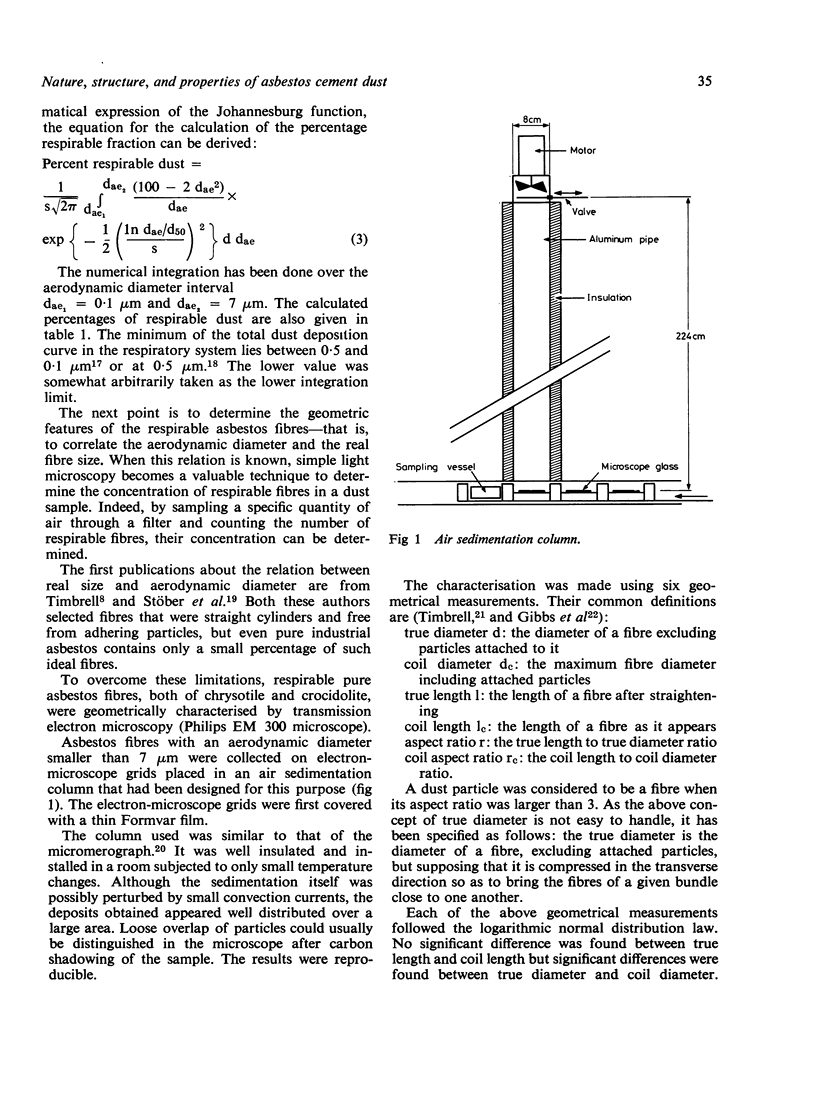
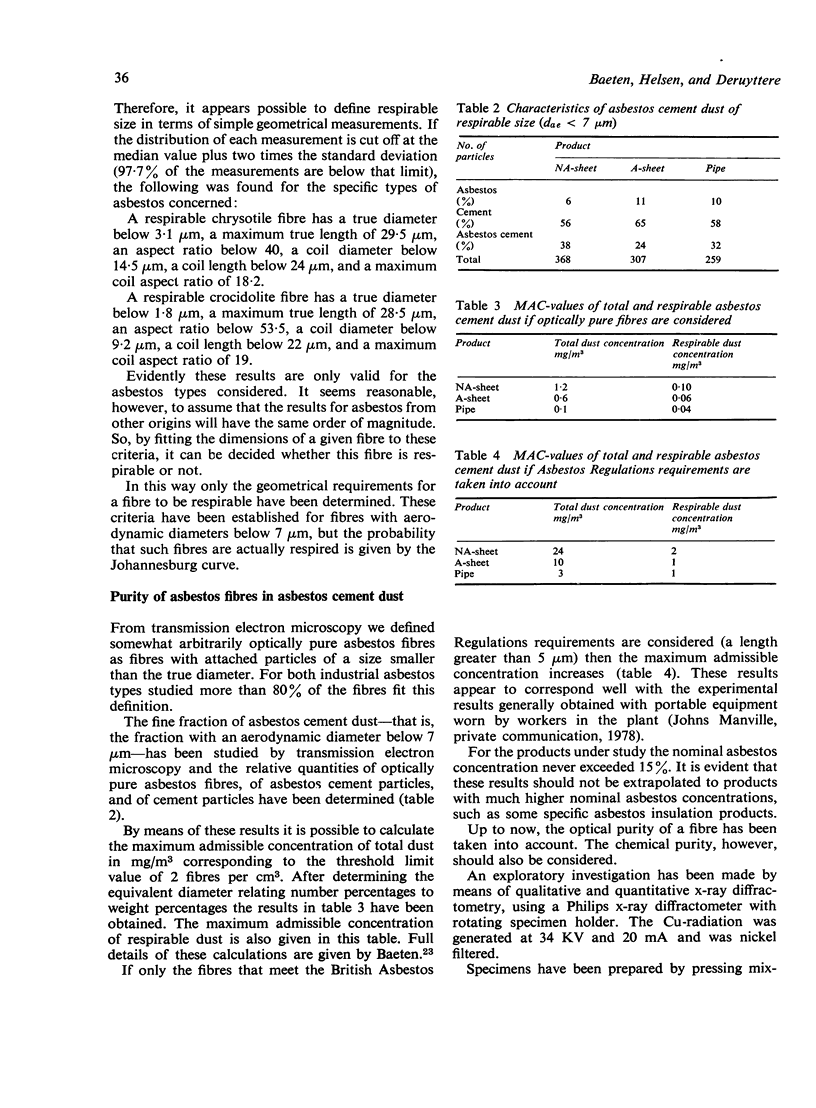
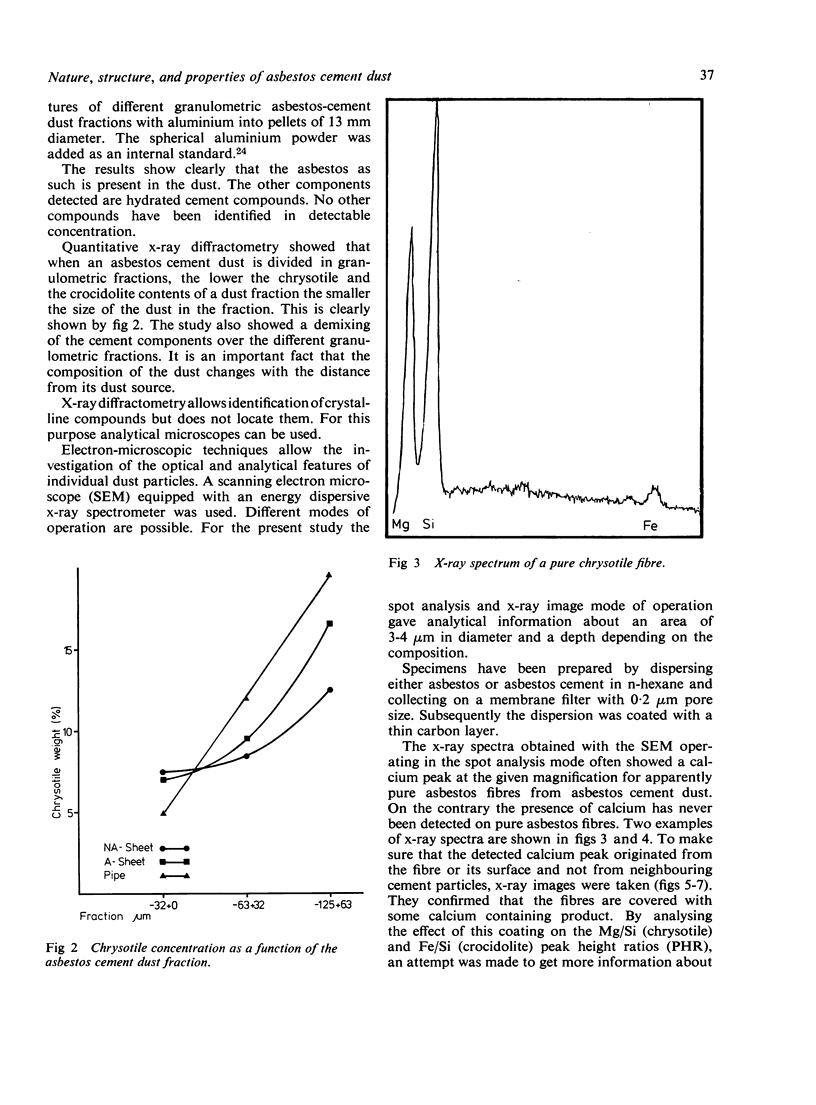

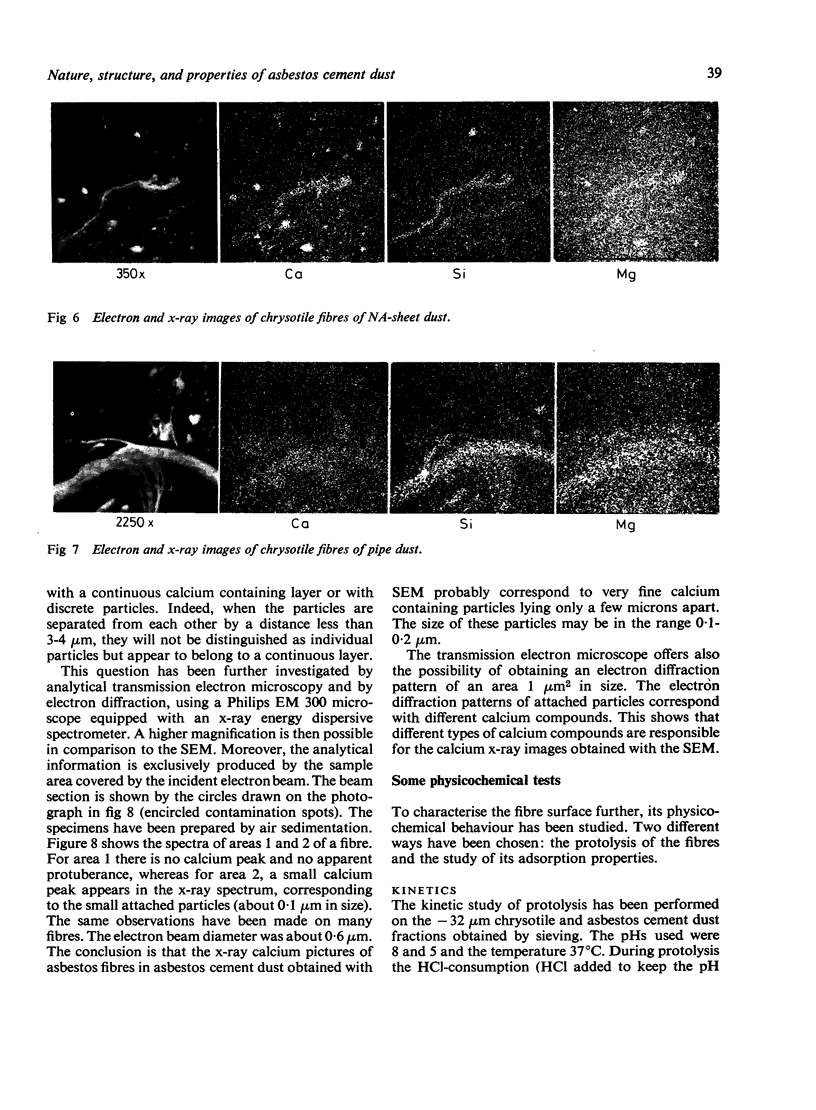
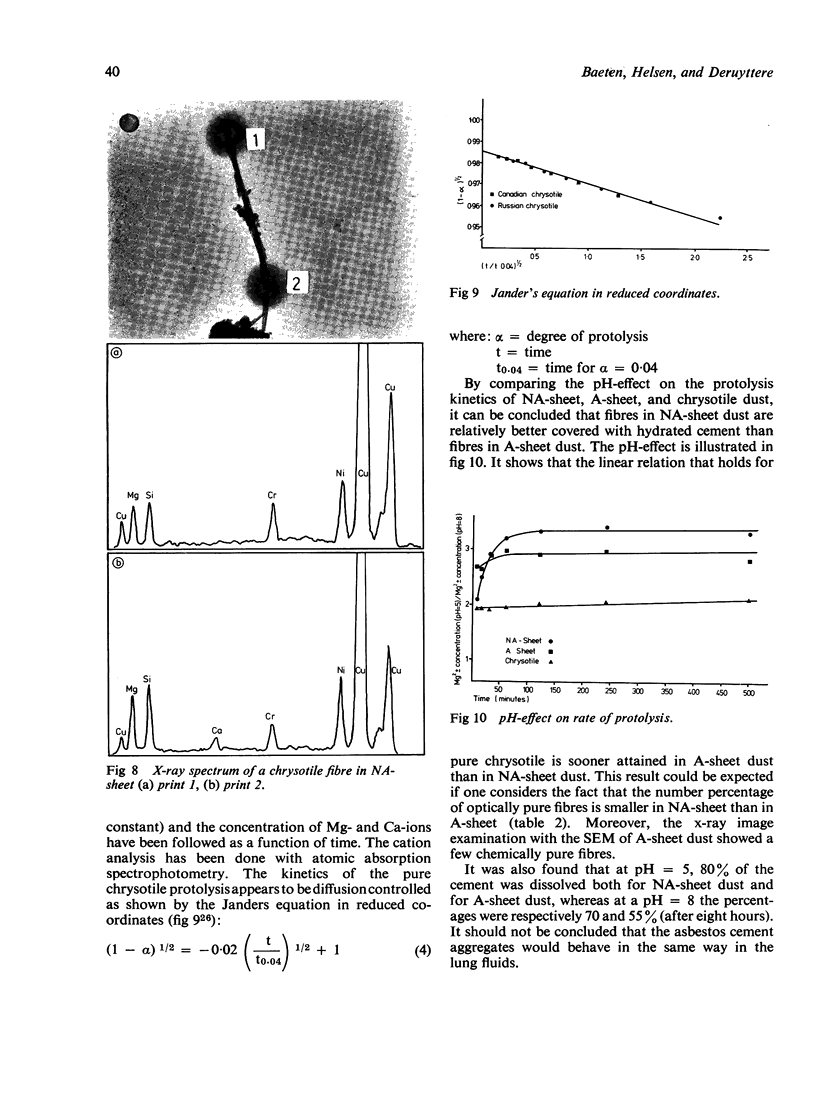
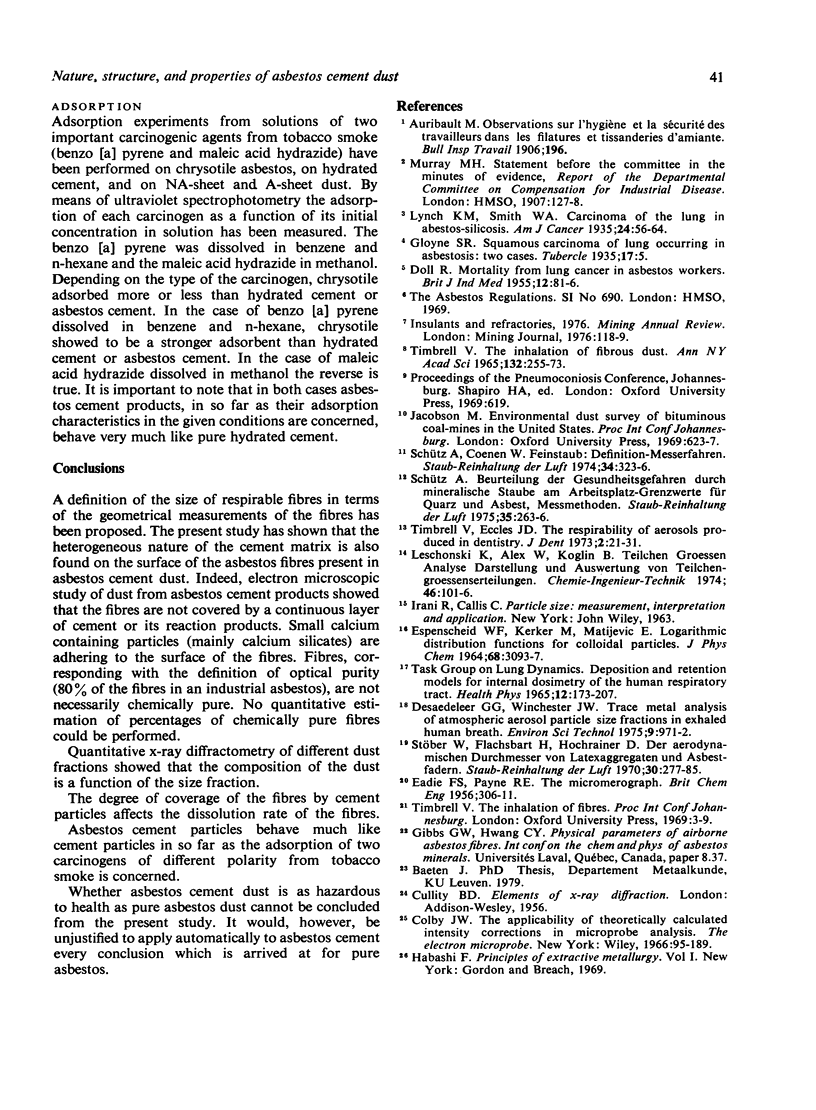
Images in this article
Selected References
These references are in PubMed. This may not be the complete list of references from this article.
- DOLL R. Mortality from lung cancer in asbestos workers. Br J Ind Med. 1955 Apr;12(2):81–86. doi: 10.1136/oem.12.2.81. [DOI] [PMC free article] [PubMed] [Google Scholar]
- Timbrell V., Eccles J. D. The respirability of aerosols produced in dentistry. J Dent. 1973 Oct;2(1):21–31. doi: 10.1016/s0300-5712(73)80006-5. [DOI] [PubMed] [Google Scholar]
- Timbrell V. Human exposure to asbestos: dust controls and standards. The inhalation of fibrous dusts. Ann N Y Acad Sci. 1965 Dec 31;132(1):255–273. doi: 10.1111/j.1749-6632.1965.tb41107.x. [DOI] [PubMed] [Google Scholar]






